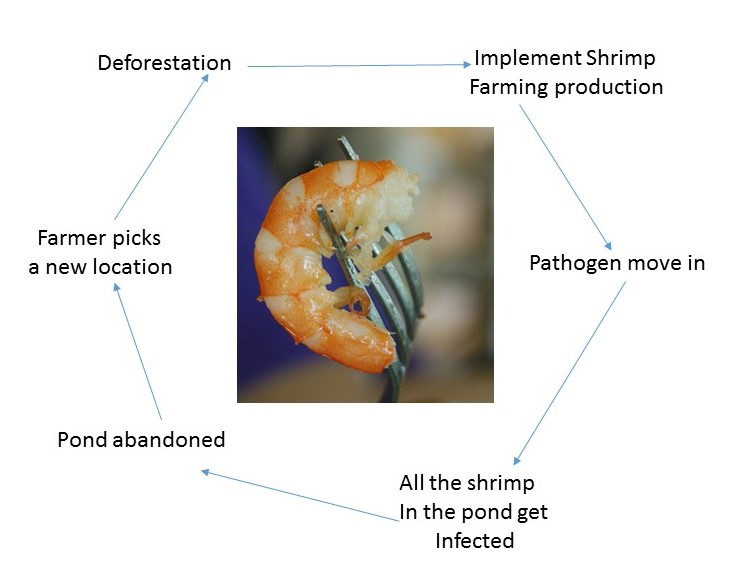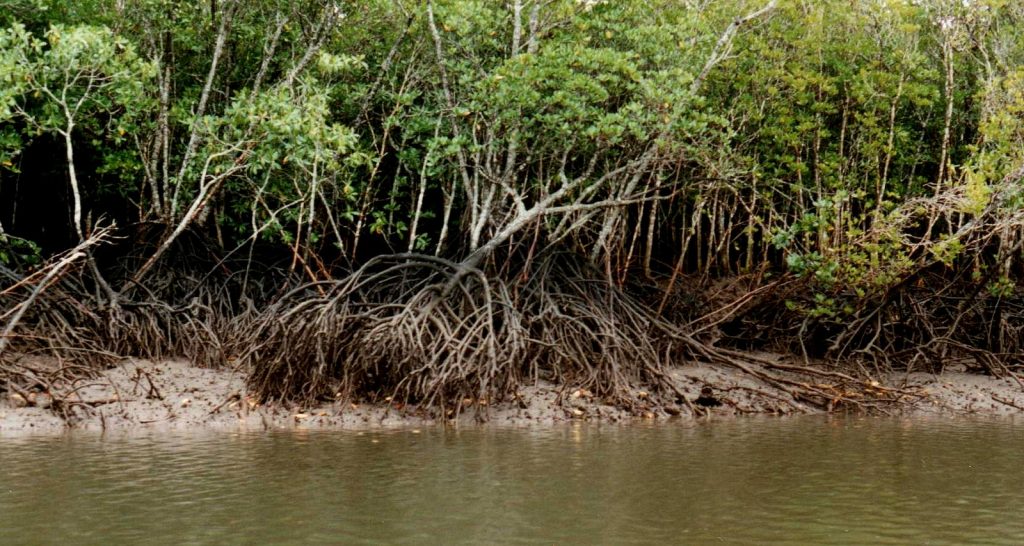Mangroves are arguably the coolest ecosystem on the planet, in addition to being one of the most biologically productive. Mangroves are trees with above-ground root systems that are partially submerged in water. They are located predominantly in tropical and subtropical coastal regions where freshwater meets the sea.
These ecological powerhouses provide vital ecosystem services to coastlines and surrounding communities because they mitigate storm surge, minimizing the impact from hurricanes. This will be increasingly important as storm intensity and frequency increases with climate change.
And mangroves are not only effective at mitigating the effects of climate change–they are also effective at minimizing the causes. The nature of their partially submerged root systems allows for substantial carbon sequestration. In fact, coastal ecosystems are ten times better at carbon sequestration and carbon storage than typical tropical forests, which is why there is so much attention given to protecting them.
Unfortunately, mangroves are currently disappearing at an alarming rate due to a surprising culprit: shrimp farming.
Why Shrimp?
Over the last two decades, the global demand for shrimp has increased dramatically with the rise of the middle class. Global North countries like the US are responsible for most of the global demand, but the US produces only 12% of total shrimp we consume. The other 88% of the 1.6 billion lb/yr consumed here is supplied by imports from countries in tropical regions.
Shrimp farming is a lucrative business for farmers in the tropics, and many smallholder rice farmers along the coasts of Sri Lanka, China, Vietnam, and Ecuador are entering the industry.
This new industry comes at a cost to the environment. Deforestation of mangrove is happening at alarming rates. In Sri Lanka alone, between 1992 and 1998, over 50% of the mangrove cover was removed in order to establish shrimp aquaculture.
Converting mangrove areas to shrimp production results in a slew of environmental and social issues in these already vulnerable areas. Most importantly, this land use change results in a significant output of greenhouse gasses.
GHG emissions increase with shrimp production in mangroves for three main reasons
(1) Deforestation and draining of mangroves result in a large output of CO2 (carbon dioxide) from previously sequestered carbon in mangrove peat soils. In addition, deforestation of mangroves means that their ability to sequester GHGs in the future is ruined.
(2) Wastewater from shrimp farming is full of nutrients and microbes that change the physical soil characteristics to a finer texture. This change in texture increases the degrees of pyritization which leads to an increased output of CH4 (methane).
(3) Nutrients that were put into the shrimp ponds will flow out as wastewater into mangrove ecosystems. The wastewater has high levels of nitrogen which leads to increased output of N2O (nitrous oxide).
Shrimp pond abandonment also leads to GHG emissions
Imagine a smallholder rice farmer in the Philippines. Rice production is working fine for him, but it is not that lucrative given the price of rice. So he decides to try shrimp farming for the short term economic gain. The farmer will cut the mangrove tree roots away and soils are dredged up releasing all of that previously sequestered carbon into the atmosphere.
However, there is no real structure to th e industry or local knowledge on successful shrimp production. So quickly the water quality of his shrimp pond starts to fail and pathogens move in. In a few years, he abandons his shrimp pond.
e industry or local knowledge on successful shrimp production. So quickly the water quality of his shrimp pond starts to fail and pathogens move in. In a few years, he abandons his shrimp pond.
In fact, 90% of the area that has been converted to shrimp ponds is abandoned within 4 to 10 years. All the while, carbon, methane, and nitrous oxide are being released and the mangrove ecosystem and the important services it provides has disappeared.
There are sustainable solutions to this cycle
In response to the recent attention to mangrove deforestation and unsustainable shrimp production, there is a growing body of research investigating sustainable shrimp aquaculture systems. These include multi-trophic aquaculture, small-scale caged aquaculture integrated into mangrove ecosystems, and indoor aquaculture shrimp farming facilities, such as the local facility in Newburgh, NY.
In terms of protecting the valuable mangrove ecosystem services, there is research being done into REDD+ programs that to fund mangrove reforestation projects, as well as initiatives to measure mangrove and water health using GIS and satellite imagery.
Sustainable mangrove use is not only good for the climate, but will be beneficial for local livelihood for years to come.

